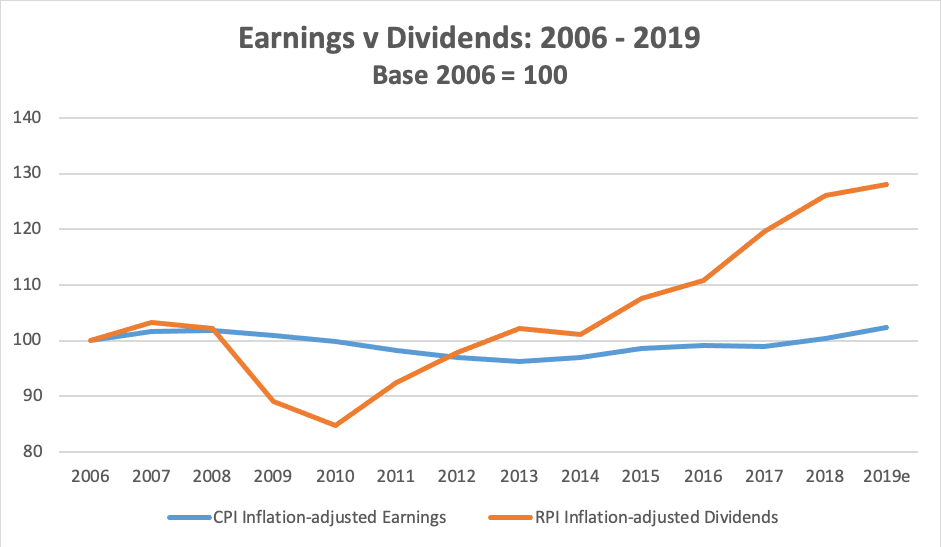How much has your income increased over the last year? The latest data from…

The Taxation of Buy-to-Let Properties
The Autumn Statement included a proposal for an additional 3% SDLT charge on post 31 March 2016 purchases of residential property not used as a main residence. This was yet another “tax blow” to the already beleaguered “buy-to-let” sector. But in addition to this increase to front-end costs let’s not forget that changes to the wear and tear allowance and substantial changes to the way buy-to-let investors will be taxed in the future if they have a mortgage and are higher/additional rate taxpayers are in the pipeline. In this article we examine the implications of these changes which are important to those of your clients with buy-to-let investments.
(1) Wear and tear allowance
Currently, a landlord of a furnished property can offset 10% of the rental income as a wear and tear allowance for keeping furnishings in a fit and proper state irrespective of the actual costs incurred. From 6 April 2016, such an allowance will only be given on expenditure actually incurred in maintaining the furnishings.
(2) Tax relief on mortgage interest
Currently, in determining taxable income, a landlord can deduct qualifying interest against rental income. In this respect qualifying interest will be interest paid on loans taken to buy or improve the property. This means that the landlord will obtain tax relief at the top rate of tax paid – be that basic rate, higher rate or additional rate.
The government proposes to phase out tax relief, starting from 2017/18, at the higher and additional rates over a period of four years so that in 2020/21 tax relief will only be available at the basic rate. The phase out of higher/additional rate tax relief will be at 25% per year. Also from 2017/18 basic rate tax relief will be given by way of a credit for deduction against any higher/additional rate tax payable.
An example should help make this clear.
Joe is a higher rate taxpayer and enjoys a rental income of £10,000 per annum from his buy-to-let property. He has a mortgage used to buy the property on which he pays £6,000 interest per annum.
His position as regards the taxation of the rental income over the four years from 2017/18 will be as follows:
Past performance is not a reliable guide to the future. The value of investments and the income from them can go down as well as up. The value of tax reliefs depend upon individual circumstances and tax rules may change. The FSA does not regulate tax advice. This newsletter is provided strictly for general consideration only and is based on our understanding of law and HM Revenue & Customs practice as at January 2011 and the contents of the 2010 Comprehensive Spending Review. No action must be taken or refrained from based on its contents alone. Accordingly no responsibility can be assumed for any loss occasioned in connection with the content hereof and any such action or inaction.
Professional advice is necessary for every case, we would love to hear from you…
|
2015/16 and 2016/17 £ |
2017/18 £ |
2018/19 £ |
2019/20 £ |
2020/21 £ |
|
|
Rent |
10,000 |
10,000 |
10,000 |
10,000 |
10,000 |
|
Interest |
6,000 ______ |
4,500 ______ |
3,000 ______ |
1,500 ______ |
– ______ |
|
4,000 |
5,500 |
7,000 |
8,500 |
10,000 |
|
|
Higher rate tax |
1,600 |
2,200 |
2,800 |
3,400 |
4,000 |
|
Less basic rate credit |
– |
300 |
600 |
900 |
1,200 |
|
Net tax |
– |
1,900 |
2,200 |
2,500 |
2,800 |
|
Net receipt |
2,400 |
2,100 |
1,800 |
1,500 |
1,200 |
The proposed rules will therefore have a profound impact on landlords who
- have a mortgage in respect of that buy-to-let property and
- are higher/additional rate taxpayers
The tax changes could also have the effect of moving some basic rate taxpaying landlords into higher rate tax and so care should be exercised.
One of the important changes in the new tax approach is that mortgage interest will no longer be deducted from rental income to determine taxable income – instead basic rate tax relief will be given by way of a credit against other tax payable on the buy-to-let. This means that the level of taxable income that a landlord has will increase. This, in turn, may, directly or indirectly, affect entitlement to allowances, such as child benefit (by way of the high income child benefit tax charge), personal allowances, annual allowances for pension plans and whether chargeable event gains suffer higher rate tax or not. For example, in Joe’s case, his taxable income from the buy-to-let will have moved from £4,000 in 2016/17 to £10,000 in 2020/21. This may well have significant other tax repercussions.
Any person contemplating setting up a buy-to-let business in the future may prefer to run the business inside a company structure.
The company would still be entitled to full tax relief on the mortgage interest and net profits would only currently suffer corporation tax at 20% – reducing to 19% in financial year 2017 and 18% in financial year 2020. Profits could be extracted from the company by way of dividend payments which would not attract National Insurance. Also, the first £5,000 of the dividend payment will, from 6 April 2016, be tax free assuming the allowance has not been used elsewhere. Of course, there are other issues with the corporate ownership route – not least the extra formalities involved and the possibility of double tax on capital gains on the sale of the property ie. once in the company with a subsequent net capital gain reflected in the value of the shares.
As far as existing higher/additional rate tax buy-to-let investors with mortgage interest are concerned, they will now need to consider their position. Possible planning action would include:-
- repaying the mortgage if funds are available or
- the transfer of the property to a low taxpaying spouse/civil partner.
Action
The changes need to be seriously considered by those who have buy-to-let property (especially those with a high loan to value ratio) and those thinking about this type of investment. The changes will mean for many that greater focus needs to be given to the capital growth qualities of the investment to justify an acceptable return. Investors (and would-be investors) should be reminded of this and, of course, the danger of over concentrating investment on a single asset class. The power of diversification should always be borne in mind when designing an investment strategy.


